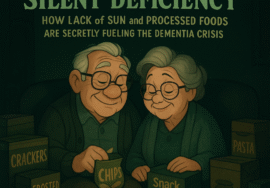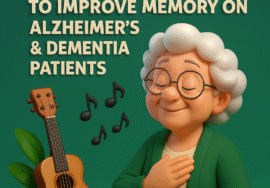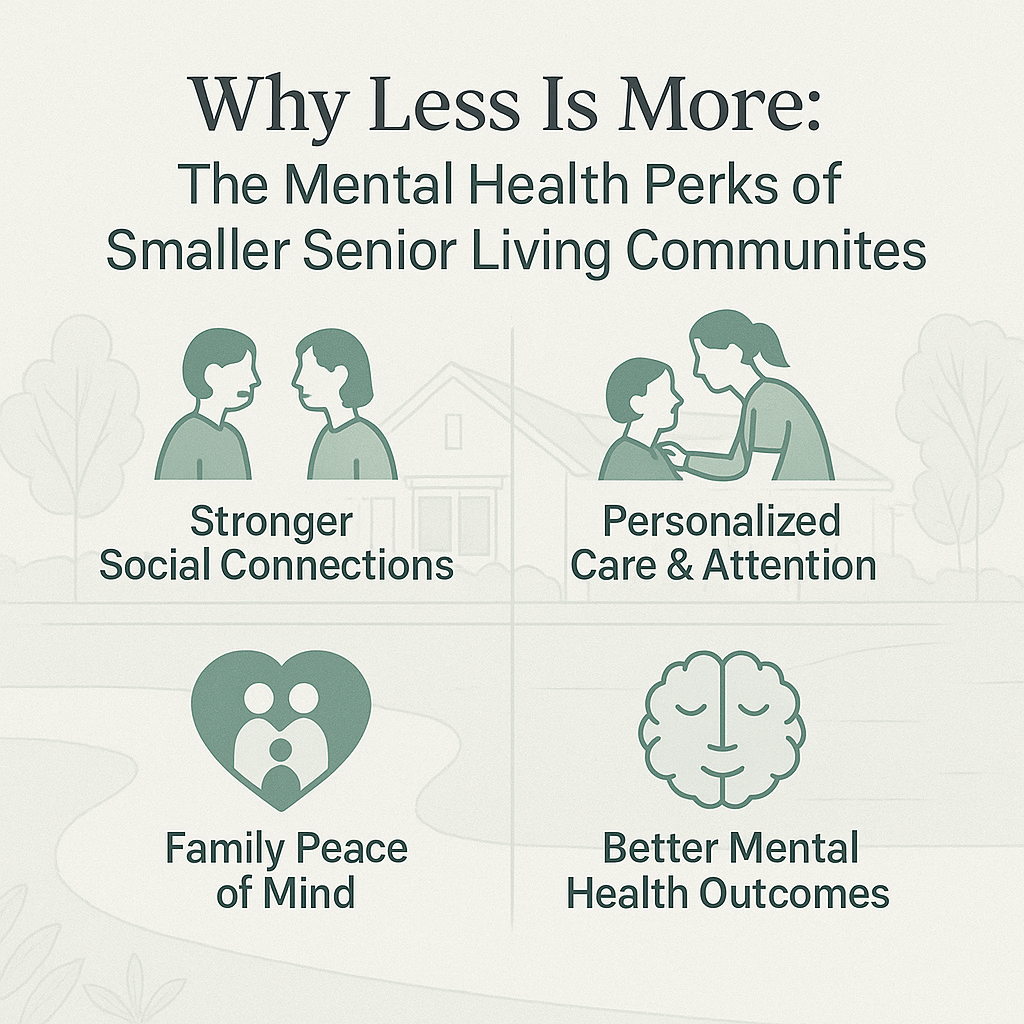
What Is Sundowning?
Sundowning is a complex and often distressing phenomenon that primarily affects individuals with Alzheimer’s disease and other forms of dementia. Also known as “late-day confusion”, sundowning typically occurs in the late afternoon, evening, or night hours, manifesting as increased confusion, agitation, anxiety, aggression, or restlessness. For families and caregivers, these changes can be alarming, especially when the same individual may have been relatively calm or lucid during earlier parts of the day.
How Common Is Sundowning?
Sundowning affects a significant percentage of individuals with cognitive impairment. Clinical studies estimate that 20% to 45% of people with Alzheimer’s will experience symptoms of sundowning at some point in their progression. While it is more prevalent in mid to late-stage dementia, it can begin even during early stages, particularly when environmental or emotional stressors are present.
At Evergreen Cottages in Katy, Texas, staff are specially trained to observe for sundowning behaviors and create structured, calm, and responsive environments that help mitigate this daily challenge. In fact, much of the home’s design—like its secured “never-lost” layout and cozy, natural light-filled living spaces—helps decrease confusion that often triggers late-day symptoms.
Common Symptoms of Sundowning
Sundowning can present with a variety of behaviors, some subtle and others more intense. These include:
- Pacing or Wandering: A common sign of anxiety or restlessness.
- Increased Confusion or Disorientation: Forgetting names, places, or the day’s events more frequently as the evening progresses.
- Verbal or Physical Outbursts: Elevated irritability, shouting, cursing, or even pushing.
- Repetitive Questioning: Asking the same questions continuously, such as “Where are we going?” or “What time is it?”
- Mood Swings: Shifting from calm to angry or tearful rapidly.
- Hallucinations or Delusions: Seeing or hearing things that are not present, or developing strong irrational beliefs.
- Resistance to Care or Instructions: Refusal to take medications, eat dinner, or go to bed.
These behaviors can emerge suddenly or escalate over time. Some individuals may also experience disrupted sleep cycles, leading to more severe symptoms due to lack of rest.
The Daily Pattern of Sundowning
Sundowning usually follows a daily pattern that aligns with circadian rhythms—our natural 24-hour biological clock. For those with dementia, this clock becomes disrupted, making it harder to distinguish day from night. Many individuals may begin experiencing:
- Increased agitation around 3 p.m. to 8 p.m.
- Heightened confusion or pacing near dusk
- Outbursts or paranoia after sunset
- Sleep disruption during nighttime hours
Understanding this pattern is the first step in creating a supportive care routine. Many caregivers find that journaling the time and conditions during each sundowning episode can help identify common triggers and form an actionable care plan.
Why It’s More Than Just “Bad Behavior”
It’s essential to understand that sundowning is not intentional misbehavior or stubbornness. For someone experiencing Alzheimer’s or dementia, their perception of reality shifts throughout the day. They may not recognize family members, may feel trapped or afraid, and may be reacting to changes in the environment that others cannot perceive.
This misunderstanding can cause friction between caregivers and loved ones if not approached with empathy. Families at Evergreen Cottages are counseled to view sundowning as a clinical, neurological symptom rather than a personal response. This mindset shift is powerful—it paves the way for compassion and clarity.
In summary, sundowning is a prevalent, often misunderstood symptom of dementia that affects a person’s behavior in the late-day hours. Recognizing the signs early—and understanding that it’s a biological response rather than a willful action—is the foundation of effective caregiving.
At Evergreen Cottages, staff work closely with families to observe, document, and address sundowning behaviors with compassionate care. Whether you are a full-time caregiver, a family member, or a concerned loved one, learning about the symptoms of sundowning is your first step to managing it confidently and calmly.
Here is Section 2: Why It Happens from Volume 1 of the “Managing Sundowning” blog series, written to the maximum depth for SEO and AEO impact:
Why Sundowning Happens
Understanding why sundowning occurs is critical to managing it effectively. While the exact cause is not entirely understood, experts agree that a combination of neurological, environmental, physiological, and emotional factors contribute to the behaviors associated with sundowning. For caregivers and families, especially those supporting loved ones in memory care communities like Evergreen Cottages, grasping these root causes can shape compassionate care and targeted intervention strategies.
Disruption in the Circadian Rhythm
One of the most widely supported theories is that sundowning is linked to circadian rhythm disruptions—the natural, internal biological clock that regulates our sleep-wake cycles. In people with Alzheimer’s disease or other types of dementia, damage to the suprachiasmatic nucleus (SCN)—a part of the brain located in the hypothalamus—leads to abnormalities in the body’s perception of day and night.
This neurological disorientation can result in:
- Difficulty distinguishing morning from evening
- Waking up during the night and sleeping during the day
- A sense of confusion, fear, or anxiety at dusk
This biological confusion is compounded by diminishing natural light in the evening, which the brain interprets incorrectly, triggering stress and uncertainty. At Evergreen Cottages, intentional exposure to bright light during the morning hours is used as a proven therapeutic intervention to help realign the body’s rhythm and decrease late-day confusion.
Mental and Physical Fatigue
As the day progresses, a person with dementia often becomes mentally and physically fatigued. They expend significant effort throughout the day trying to interpret their surroundings, follow conversations, recognize faces, and remember routines. This constant cognitive load can become exhausting—leading to what experts call “decision fatigue” and “cognitive exhaustion.”
Key signs of fatigue-related sundowning include:
- Unprovoked outbursts of frustration
- Refusing meals or medication in the evening
- Increased wandering or vocalizations after dinner
In these cases, rest breaks, quiet time, and low-stimulation environments in the late afternoon can help preserve remaining energy and ease transitions into evening routines. Evergreen Cottages uses calm activity zones and limits overstimulation by adjusting lighting, sound, and room temperature in the late hours.
Environmental Triggers
Even subtle changes in the physical environment can trigger sundowning behaviors. Shadows, background noise, temperature shifts, and even visual clutter may cause confusion or fear. Some common environmental triggers include:
- Dim lighting or long shadows as the sun sets
- Excessive noise from TV, phones, or chatter
- Crowded rooms or chaotic transitions at mealtime
- Too many mirrors or reflections (which may be misinterpreted)
At Evergreen Cottages, great care is taken to design a sensory-balanced setting, with warm-toned lights, consistent decor, soft background music, and cozy, familiar surroundings. These environmental cues help residents feel secure, reducing the likelihood of agitation.
Hunger, Dehydration, or Physical Discomfort
Late-day agitation can also stem from basic unmet physical needs, which the individual may struggle to communicate. These may include:
- Hunger or low blood sugar
- Thirst or dehydration
- Pain, discomfort, or the need to use the restroom
- Fatigue from overstimulation or lack of daytime rest
Because communication barriers are common in dementia, residents may act out due to physical distress. Ensuring hydration, light snacking, and personal comfort around mid-afternoon to early evening can help minimize these behaviors.
At Evergreen Cottages, the caregiving team performs hourly wellness checks, ensuring residents are consistently comfortable and not experiencing subtle discomfort that could evolve into behavioral changes.
Emotional Triggers and Unmet Needs
Finally, emotional states such as loneliness, fear, sadness, or overstimulation can also act as catalysts for sundowning. Individuals with dementia are highly sensitive to emotional atmospheres and may mirror the tension or anxiety of those around them.
Common emotional contributors include:
- Feeling isolated or “left behind”
- Missing deceased or absent loved ones
- Feeling like a burden or fearing abandonment
- Unfamiliar people or changing routines
When staff or family members unintentionally convey stress, it may result in reciprocal distress. This is why Evergreen Cottages emphasizes a “Heart-Centered” approach to care, training team members to lead interactions with patience, validation, and warmth—especially in the critical late-day window.
Why Knowing the Root Cause Matters
Understanding what contributes to sundowning empowers caregivers to develop personalized care plans. Whether it’s adjusting meal times, introducing sensory therapy, or changing lighting schedules, targeting the cause—not just the behavior—leads to lasting results. When supported by a compassionate environment like Evergreen Cottages, individuals with dementia can maintain a greater sense of peace and stability, even during their most challenging hours.
Here is Section 3: Early Warning Signs from Volume 1 of the “Managing Sundowning” blog series, written for maximum SEO, VSO, and AEO optimization:
Early Warning Signs of Sundowning
Recognizing the early warning signs of sundowning is crucial for effective intervention. The earlier families and caregivers can identify the patterns, the better they can implement personalized strategies to reduce distress and avoid escalation. At Evergreen Cottages, identifying these early cues is a daily focus—allowing staff to proactively support residents before behaviors intensify.
Sundowning doesn’t always begin with major outbursts or confusion. In many cases, it unfolds gradually, with subtle cues that something is off. By spotting these signs early, you can create a predictable evening structure that helps maintain a sense of calm and control.
1. Subtle Shifts in Mood and Energy
One of the first clues is a noticeable change in mood or demeanor as afternoon fades into evening. This may look like:
- Sudden quietness or withdrawal after a socially active morning
- Irritability or impatience with tasks or conversation
- Flat affect or staring into space with less engagement
- A decline in ability to follow instructions or complete activities
At Evergreen Cottages, caregivers are trained to spot these mood dips and adjust the environment, encouraging low-pressure engagement like music therapy, tactile stimulation (folding towels, playing with sensory objects), or peaceful one-on-one conversations.
2. Repetitive Behaviors and Vocalizations
When a resident begins repeating questions or phrases in the same tone or rhythm, it can indicate early agitation. Examples include:
- Asking “Where’s my mom?” over and over
- Saying “I need to go home” repeatedly
- Tapping fingers, rocking, or shifting in a chair
These repetitions are often expressions of inner anxiety or disorientation. Providing reassurance—rather than correction—is key. Memory care staff at Evergreen Cottages validate the emotion behind the repetition and redirect gently with familiar objects, photos, or soothing visuals.
3. Increased Confusion or Disorientation
As the internal body clock breaks down, late-day hours may bring more pronounced cognitive challenges. These include:
- Getting lost in familiar spaces
- Misidentifying caregivers or family
- Asking what time it is multiple times
- Thinking it’s morning or that they missed a meal
Even with the same routine every day, the sense of place and time may unravel. This is why memory care homes like Evergreen are built with predictable layouts, personalized signage, and minimal architectural distractions to orient residents naturally.
4. Restlessness and Physical Pacing
A common early physical signal of sundowning is pacing—the act of walking repeatedly without an apparent goal. This may be accompanied by:
- Fidgeting or hand-wringing
- Standing and sitting repeatedly
- Wandering into others’ rooms
- Picking at clothing or items
These behaviors are often driven by underlying feelings of confusion or the need to “do something.” Movement-based distraction—such as folding laundry, light stretching, or walking with a staff member—can channel this energy into safe, reassuring routines.
5. Changes in Appetite or Refusal to Eat
When someone suddenly loses interest in their evening meal or starts refusing food or drinks they typically enjoy, it may signal emotional or sensory distress. In late stages of dementia, this might also be caused by:
- Disruption of appetite regulation
- Difficulty interpreting hunger signals
- Confusion about what food is or how to eat
Care teams at Evergreen Cottages address this by creating calming dining environments—eliminating visual clutter, offering smaller portions, and using verbal encouragement with a warm, familiar tone.
6. Expressions of Fear or Anxiety
Residents may verbalize their internal discomfort using emotionally loaded language like:
- “Something bad is happening.”
- “I need to leave now.”
- “I don’t feel right.”
- “Why is everyone acting strange?”
Even if the words don’t seem logical, these expressions reflect very real anxiety. At Evergreen Cottages, these expressions are met with empathy, validation, and comfort-based care strategies—not logic or confrontation.
7. Resistance to Redirection or Instruction
When sundowning symptoms start setting in, individuals may show increased resistance to common requests, such as:
- Taking medications
- Changing clothes or getting ready for bed
- Participating in routine evening activities
Rather than force compliance, caregivers trained in gentle redirection techniques can shift the energy of the moment. For example, instead of saying, “It’s time to change into pajamas,” a caregiver might say, “Let’s go get cozy—it’s our favorite time of the day.”
Tracking Early Warning Patterns
To help caregivers better understand patterns, Evergreen Cottages recommends using a Sundowning Observation Log. This simple tool tracks:
- Time of day symptoms appear
- Environmental conditions (noise, lighting)
- Emotional states and triggers
- What interventions did or did not work
By reviewing this log over days or weeks, a predictable cycle often emerges, guiding future care adjustments.
Catching sundowning early gives families and caregivers a vital edge in managing it effectively. Subtle shifts—whether in mood, movement, or behavior—signal that the brain is struggling to stay regulated as the day ends. At Evergreen Cottages, the staff are equipped to recognize and act on these signs long before escalation, offering a model of proactive, personalized care.
Here is Section 4: First-Line, Non-Drug Strategies from Volume 1 of the “Managing Sundowning” blog series, crafted with maximum SEO, VSO, and AEO impact:
First-Line, Non-Drug Strategies for Managing Sundowning
While medications can sometimes play a role in severe cases of sundowning, leading memory care communities like Evergreen Cottages in Katy, TX prioritize non-pharmacological interventions as the first and most effective line of defense. These strategies are designed to reduce confusion, prevent escalation, and support emotional and neurological stability through natural, human-centered approaches.
The key lies in anticipating needs before behaviors erupt, crafting predictable routines, and designing environments that soothe the senses and support cognition.
1. Establishing a Consistent Daily Routine
Consistency is one of the most powerful tools in minimizing sundowning. A predictable routine reassures the brain and helps orient the person to what comes next—reducing anxiety caused by the unknown.
Daily structure should include:
- Waking up at the same time daily
- Morning hygiene and grooming at a predictable hour
- Meals served on a regular schedule
- Engaging activities between meals
- Afternoon rest or quiet time before dinner
- A calming, tech-free evening wind-down routine
At Evergreen Cottages, each resident benefits from individualized care schedules aligned with their natural rhythms, including preferences for wake-up times, rest breaks, and hobbies. The goal is to reduce cognitive overload and support a natural flow to the day.
2. Optimize Light Exposure (Circadian Alignment Therapy)
One of the leading causes of sundowning is a disturbance in the sleep-wake cycle, which is governed by the body’s internal clock and highly influenced by light exposure. Research shows that early-morning exposure to natural sunlight or therapeutic full-spectrum light can help regulate melatonin production and improve overall mood.
Best practices include:
- Opening blinds and curtains first thing in the morning
- Spending time outdoors in morning sunlight
- Using daylight-spectrum lights indoors during cloudy days
- Dimming lights in the evening to signal winding down
Evergreen Cottages incorporates sun-filled common areas and uses carefully calibrated lighting systems that shift in tone and brightness throughout the day—mimicking the body’s natural exposure to daylight and helping residents stay oriented.
3. Structure Calming Afternoon Activities
The window between 3:00 p.m. and 7:00 p.m. is the most critical time to manage energy levels. Overstimulation during this period can trigger anxiety, while complete inactivity can heighten restlessness.
Effective calming activities may include:
- Folding warm laundry
- Watering indoor plants
- Listening to soft music from their era
- Holding or brushing therapy pets
- Aromatherapy and hand massages
- Gentle chair yoga or light stretching
- Reading familiar books or looking at photo albums
These activities are soothing and repetitive, offering tactile engagement without cognitive demand. Evergreen Cottages also incorporates structured Life Stations (e.g., baby doll therapy, tool benches, homemaker corners) that mirror former routines and offer a sense of purpose.
4. Environmental Adjustments for Comfort and Clarity
The physical space where a person resides plays a major role in either escalating or de-escalating sundowning symptoms. Visual or auditory clutter can be disorienting, while comforting design choices create emotional and neurological ease.
Key environmental modifications include:
- Minimizing mirrors (they may confuse or startle residents)
- Limiting TV noise and choosing soft, instrumental background music
- Using nightlights in hallways and bedrooms
- Installing blackout curtains to reduce sunset confusion
- Maintaining a comfortable, warm room temperature
- Avoiding overly bright or flickering light sources
Evergreen Cottages are built to feel like home—not an institution. From cozy furniture to calming wall colors and consistent layouts, every detail reduces disorientation and grounds residents in a familiar reality.
5. Use Verbal Redirection and Validation
The way you speak to someone experiencing sundowning can completely change the outcome of an episode. Instead of correcting, scolding, or arguing, caregivers should aim to redirect, validate, and soothe.
Effective phrases include:
- “You’re safe here, and I’m right here with you.”
- “Let’s go sit down together. I’ve made some tea.”
- “It sounds like you miss your home. Tell me what you loved about it.”
- “You’re doing great today. Let’s fold some towels together.”
At Evergreen Cottages, all staff are trained in compassion-based communication techniques, promoting trust and reducing distress through tone, body language, and presence.
6. Offer Light, Nutritious Snacks and Fluids
Blood sugar dips, hunger, and dehydration can easily worsen cognitive function and cause emotional volatility. During the critical afternoon window, it helps to offer:
- Small portions of easy-to-chew, healthy snacks
- Hydrating drinks like water, tea, or diluted juice
- Avoidance of sugary, caffeinated, or heavy foods after 3:00 p.m.
Evergreen Cottages emphasizes family-style dining, encouraging residents to eat in a communal, calming setting—often using aromatherapy techniques (like baking cookies) to awaken positive memories and appetite cues.
7. Encourage Rest Without Over-Napping
While short naps can be beneficial, excessive daytime sleeping may disrupt nighttime rest and worsen sundowning symptoms. Optimal rest strategies include:
- A single 20- to 30-minute nap after lunch
- Resting in a quiet room with soft lighting and no screens
- Avoiding long or late-afternoon naps that shift the internal clock
Staff at Evergreen Cottages monitor each resident’s energy levels throughout the day, offering personalized rest periods and gently transitioning residents to activity when appropriate.
First-line, non-drug strategies offer safe, powerful tools to combat sundowning and support cognitive health. By proactively managing daily routines, lighting, environment, engagement, and communication, families and caregivers can dramatically reduce evening confusion and anxiety. At Evergreen Cottages, these holistic strategies are not just best practices—they’re the foundation of daily life.








